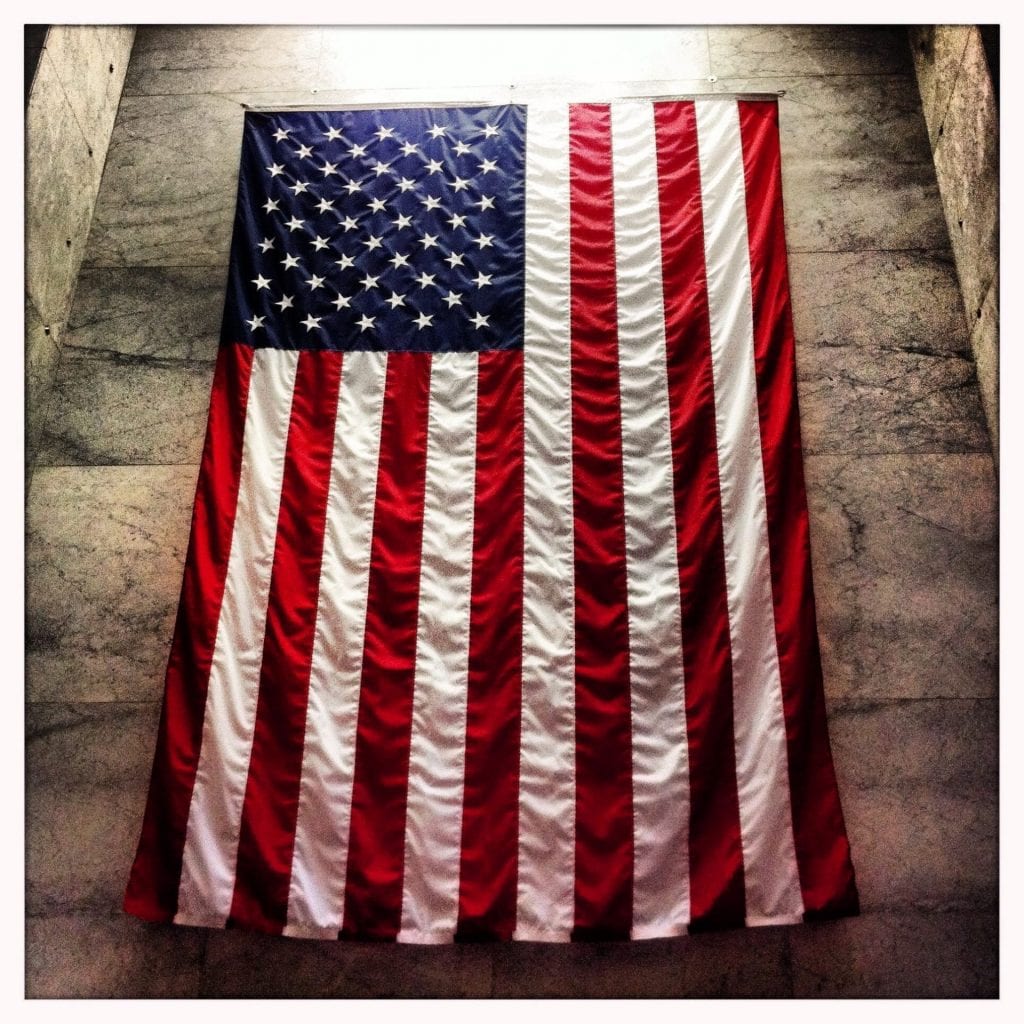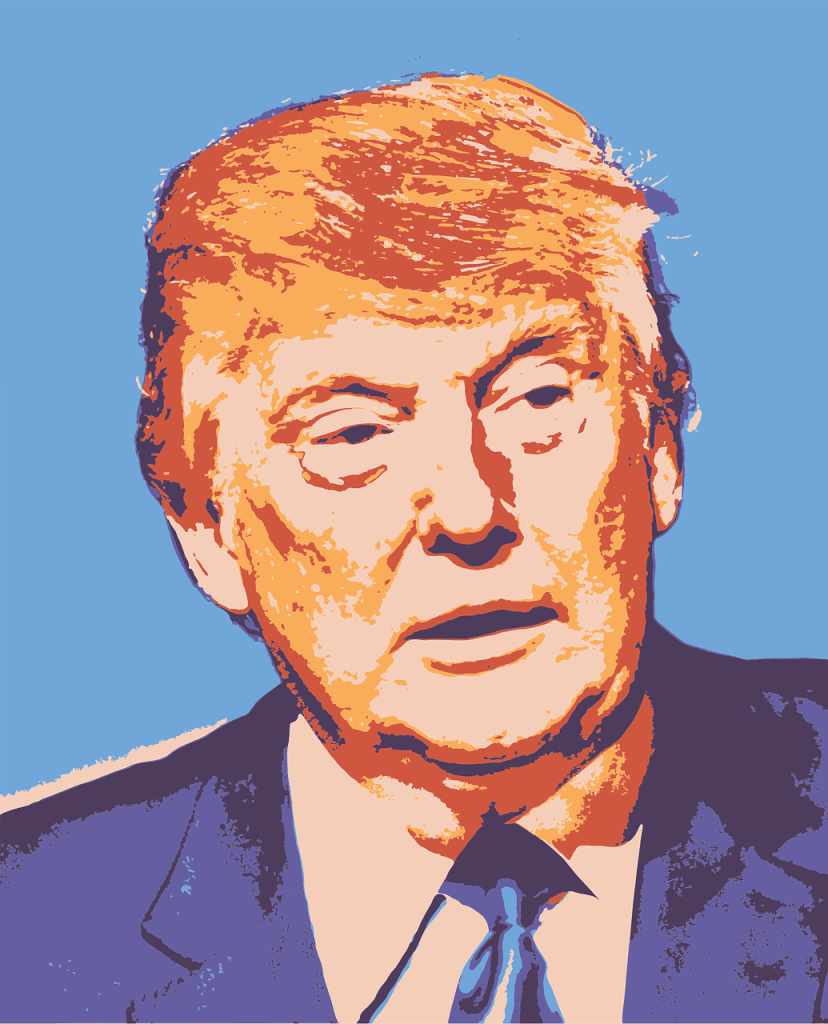by Bethany Scard
Level 3 History student
If any of you have been watching the news recently you will have seen Iranian officials burning the United States flag alongside a copy of the nuclear deal. However, this post is not another analysis of why Trump has pulled out of the agreement, or what impact this will have on Iran and other countries in the future. My focus is instead on the actual action of burning the American flag in parliament or pictures of Donald Trump by Iranian citizens on the streets. These violent and passionate acts are part of a long and complex history of politically-motivated iconoclasm that stretches back two millennia.
If we travel back to Ancient Rome there is the example of Damnatio Memoriae – literally translating to the ‘condemnation of memory’. The actions that followed this decree destroyed the memory and reputation of a previous emperor who had been declared an enemy of the state. One famous example was the condemnation of Domitian. An emperor’s statue acted as a substitute for his presence during his reign, and this continued after his death. The statues were treated as if they were Domitian himself, as if it was his flesh the public were destroying. Pliny the Younger wrote of these acts:
However, his [Domitian’s] countless golden statues, in a heap of rubble and ruin, were offered as fitting sacrifice to the public joy. It was a delight to smash those arrogant faces to pieces in the dust, to threaten them with the sword, and savagely attack them with axes, as if blood and pain would follow every single blow. No one controlled their joy and long awaited happiness, when vengeance was taken in beholding his likenesses hacked into mutilated limbs and pieces.
The destruction of the statues was a way for the public to express discontent towards an emperor who they did not have access to in real life. The life-like representation of his body was for all intents and purposes the emperor himself. In some ways, the images that have been burnt of Trump and the American flag are the modern-day equivalent to these actions. The Iranian public and politicians are challenging Trump’s politics the only way they can: as they cannot access Trump the man, the symbols that represent him are instead destroyed. However, there are some differences between this ancient act and the discontent expressed towards Trump today. This includes the level of violence, as from the account of Domitian it seems Romans believed that with each strike blood would follow. In comparison, setting a few pictures alight seems relatively peaceful. However, there are other example of the destruction of symbols of Trump’s reign. For instance, there have been many attacks against his brass star on Hollywood’s Walk of Fame. Some have taken a sledgehammer to it, while others have simply covered it with stickers calling him a racist and a bigot. Although these acts have been categorised as vandalism, the symbolism of iconoclasm is still there. The destruction of these symbols is meant to challenge the authority of Trump. It does not need to be a violent act for the discontent towards Trump’s power to be visible. Furthermore, Trump has not been the only target of such iconoclastic activities. There have been other recent examples aimed at political leaders such Saddam Hussein and the the toppling of his statue in Firdos Square, Iraq.
A newer version of damnatio memoriae has also emerged around the figure of Trump. The political cartoons that are published on a daily basis in popular magazines rarely show him in a flattering light. They usually mock the president in some shape or form, nearly as much as the memes that are created by the public for everyday consumption. When the people of America challenge their president, posting pictures that compare him to Hitler, or cartoons that ridicule his hair style, it can sometimes be difficult to imagine that Trump will last the full term of his presidency.

But we are in new territory. No leader has had to fight back against the internet to such an extent, or has had to try and manage an online profile as the web becomes increasingly influential in shaping how we live our daily lives. Unpopularity online does not necessarily translate to unpopularity in person, and there are still large swathes of the US population that support Trump’s position in office and turn out to cheer him in the streets. As time progresses we may come to find that the memes and cartoons are not a move towards undermining or destroying the president, but in fact the new way that the public voices its opinions on unpopular policies.
Further Reading:
Eric R. Varner, Mutilation and Transformation: Damnatio Memoriae and Roman Imperial Portraiture(2004).
Iranian Politicians Burn US flag, BBC News, 9 May 2018 http://www.bbc.co.uk/news/av/world-middle-east-44055625/iranian-politicians-set-fire-to-us-flag-in-parliament
Peter Mass, ‘The Toppling: How the Media Inflated a Minor Moment in a Long War’, The New Yorker,10 January 2011.
Chris Snyder, 12 Best Trump Memes of 2017, Business Insider UK, 20 December 2017 http://uk.businessinsider.com/12-best-trump-memes-of-year-donald-twitter-viral-funniest-white-house-president-2017-12
